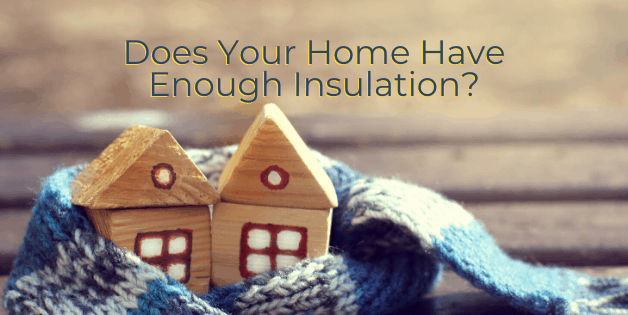
The holidays are, unfortunately enough, rarely an easy time on anyone’s wallets. Between travel expenses, entertainment expenses for hosting or attending holiday parties, and of course the seemingly never ending list of people you may feel obligated to purchase gifts for, it can often feel like your bank account is slowly being drained right before your eyes. Naturally, most homeowners will begin looking for ways to save, pinching pennies wherever possible. One major savings may have escaped your notice however. If you don’t have sufficient insulation in your home, you’re losing money constantly every single day through swiftly rising heating bills. A few moments of care and attention can address the issue and give you savings for months and years to come. But how do you know if you need to improve your home’s insulation? There’s a few simple tests that can help you determine whether you’re heating your home, or pouring your money out into the open air.
Uneven temperature throughout the day
One sign that you need to check on the insulation in your home is if you find that the temperature shifts dramatically throughout the day. Part of the point of insulation is that is should allow your home to hold a steady temperature, even as the air outside shifts from warm to cold and back again. The main point of insulation is that it keeps the warm air inside you home right there, inside. If, however, you’re lacking insulation, or the insulation in your home has broken down (such as might be the case if pests or water has damaged it), the warm air flows easily out of your home throughout the day. This leaves your home at the mercy of the temperature outdoors, and causes the dramatic shifts, instead of an even steady temperature held up by your home’s heating system.
Different rooms have different temperatures
A related symptom of poor insulation in your home is if you notice that specific rooms in your home are warmer or colder than others. This could be caused by problems with your central heating system itself, but it could also be caused by poor insulation in certain rooms, likely in the walls. This can usually be tied to something having caused damage to the insulation in specific spots, meaning those rooms will have a stronger draft, and end up cooler than others in the home. Your house had good insulation on the whole at some point, that’s why other rooms are able to retain heat and feel warmer, but some, usually pests or water, has damaged the insulation in these specific rooms.
Ice Dams on your roof
25% of your home’s heat is lost through the roof, a fact that doesn’t seem so surprising when you remember the fact learned in your school science class that “hot air rises.” As warm air inside your home rises towards the roof, a good insulation installation should then hold it in place there, slowing down the heat loss and allowing the hot air to cycle back down into the living areas, often helped along by ceiling fans in different rooms of your home. However, if the insulation in your attic or crawlspace is faulty, the hot air continues to rise and emanates from your roof. Once the warm air reaches your roof, it causes any snow or ice accumulated there to melt, then refreeze after is drips down to the cooler parts of your roof. This then causes the formation of ice dams, which can been seen from the ground level outside. In addition to indicating that you may have issues with your insulation, these ice dams can also cause damage to your roof over time.
Hopefully, these tips have helped you identify what work might need done with your insulation in your home. If you have noticed risks of damage to your roof caused by ice dams, we do encourage you to call us at New Heights Roofing for a roof inspection. Our staff works hard to help you make sure your roof is kept in its best shape possible to keep your family warm and dry all year long.